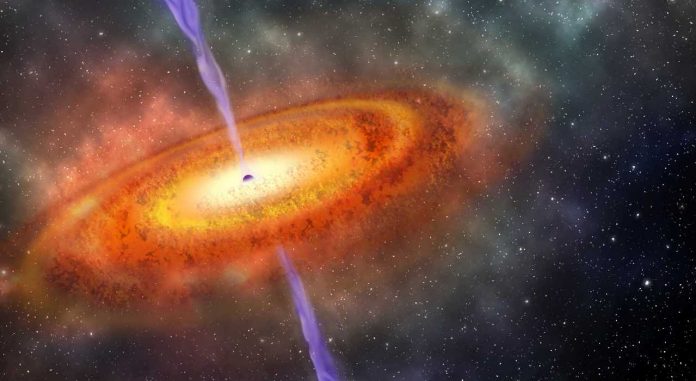Only a month into a new observing run, gravitational-wave observatories have announced five new signals — one of which could turn out to be a black hole swallowing a neutron star.
On April 1, the teams behind the three gravitational wave detectors started them up for a new observational run, the first with all three operating in parallel for the full run. With the benefit of three detectors and some upgrades that were done during the downtime, we’re seeing a flood of new data. In just one month, LIGO/VIRGO has seen five gravitational wave events. Three of those are from merging black holes, one was the second neutron star merger, and another may have been the first instance of a neutron star-black hole merger.
A new season
The two LIGO detectors have been a work in progress for years, starting with an early version that everyone acknowledged was unlikely to pick up gravitational waves. But each iteration has allowed scientists to understand the sources of error in their detectors, and they’ve been taken down for regular upgrades. The international collaboration also benefits from the fact that two additional detectors, Europe’s VIRGO and Japan’s KAGRA, have similar designs, and all the teams share what they’re learning about the hardware.
VIRGO joined LIGO for roughly a month in 2017 before its second observational run came to a close. According to Caltech’s Jess McIver, a LIGO team member, work in the intervening time went into “pushing down the quantum noise limits in the detectors.” As a result of the lowered noise, McIver said that the detectors can pick up gravitational wave events farther out into space than was ever possible before. Having three detectors helps provide better spatial information as to where the event actually originated, necessary for doing follow-up observations with traditional observatories. And, as one of the events described today makes clear, three detectors let us continue to take data even if one detector is down temporarily.
McIver added that the KAGRA detector is expected to come online later in this run, providing even better resolution.
So, what have we seen since the run started on April 1? Three events appear to be mergers of two black holes, similar to the merger that provided the first detection of gravitational waves. The identity is determined by matching the waves picked up by the detectors to models of different masses colliding; neutron stars and black holes exist in different mass ranges, allowing the detectors to infer what’s doing the colliding. Salvatore Vitale of MIT, however, described how there’s a mass gap between about two solar masses (the upper limit of neutron stars) and the smallest known black holes, which are about five solar masses. Vitale said events that seem to have an object in that mass gap are high priority for follow-up observations so we can better understand what’s going on there.
The other two events are more intriguing. One, which occurred on April 25, appears to be a neutron star collision that occurred 500 million light years away. Unfortunately, LIGO-Hanford in Washington was offline that day, so it was only registered in two detectors, which provided very poor spatial resolution. There’s no word yet on whether any optical telescopes picked up information on the event, but they’d have to search roughly a quarter of the sky to do so.
A day later, all three detectors were online when an extremely distant event occurred roughly 1.2 billion light years away. This has tentatively been identified as the first merger we’ve seen between a black hole and a neutron star. It’s not clear whether we should expect an optical counterpart to this sort of merger, but its position was narrowed down to only three percent of the total sky, suggesting we should have some good data on it if there’s anything to see.















